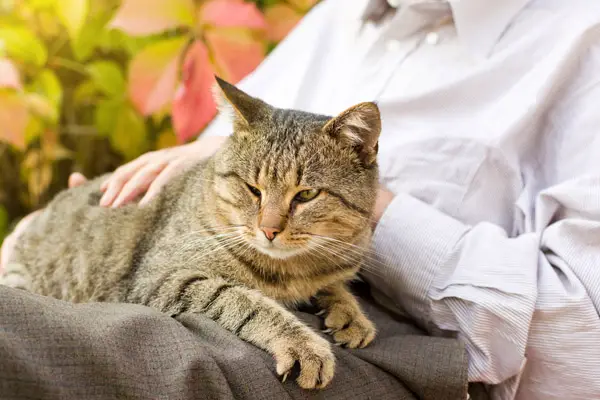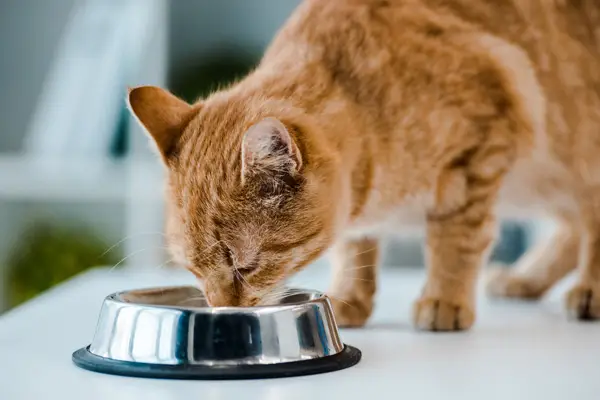
Diabetes is a condition that affects cats. It prevents their system from processing sugar, leading to serious health risks. Like humans, there also are risk factors in felines, including obesity, pancreatitis, and the effect of certain medications. There’s a possibility of remission in some breeds of cats with the help of aggressive treatment combined with a strict diet. Remissions mean that they no longer need insulin therapy.
But for the most part, cats with diabetes require lifelong insulin injections to keep the condition in check. Nevertheless, insulin treatment isn’t the only solution. You need to put in the extra attention when it comes to your cat’s diet and nutritional needs. Many require diabetic cat food as well.
Why Cats Suffer From Diabetes
Like humans, cats may carry the disease if they have a problem with insulin. It’s a hormone that is responsible for moving sugar (glucose) from the blood into the cells. Feline diabetes is like how humans acquire type 2 diabetes, wherein the body produces insulin but is less sensitive to how it’s supposed to function. The inability to transfer glucose from the bloodstream leads to the buildup of sugar in the blood. When the cat has high blood glucose levels, it’ll lead to life-threatening complications.
While there’s no universal agreement as to the exact cause of diabetes in cats, there’s a widespread consensus that it has something to do with obesity. There’s also a contention that it is prevalent in old and overweight cats. Aside from obesity, some other risk factors are chronic pancreatitis, hyperthyroidism, and medications like corticosteroids.
Diet And Nutritional Considerations

Cats love meat. Your feline depends on you when it comes to providing her with enough protein. But the food you give her could be the reason why she has diabetes.
1 – Calories
The last thing you want from your cat with diabetes is for her to be overweight. Being overweight means that it’ll be doubly challenging to control her blood glucose levels. High intake of calories is the primary cause of being overweight in humans, and the same thing happens in cats. Be sure that you measure and monitor the food you give to your feline. With weight loss, you can gradually decrease the animal’s insulin intake.
You can learn of specially designed veterinary diets for cats with diabetes. If you are unsure about the information you get online, there’s always the option of talking to your veterinarian. The vet knows which diet is best for your cat. But we’re pretty sure it’s low on calories.
2 – Carbs
Your cat needs food that is low in carbohydrates. There is no exact or optimal amount and type of carbs recommended, but everyone knows what high carb diets can do to humans with diabetes. Be reminded that most diabetic cats suffer from other health issues, most notably kidney disease. The problem with a cat with renal issues is that you can’t feed them with very low carbohydrate and high protein diets.
3 – Consistency
Figure out a pattern or way to provide your cat with food and treats from the same brand or flavor. Once you find the right product, you must stick to it. Consistency plays a critical role in helping your diabetic cat maintain its weight. It also makes you confident that you’re feeding her the right food based on her needs. Embracing consistency means you don’t worry about the ill-effects of adding something new to the cat’s diet. But it does not mean you no longer must switch to a new brand or flavor of food or treat. When you feel the need to do so, please ask your vet first.
4 – Feeding Time
Most veterinarians recommend feeding a measured amount of food twice daily. It must be given at the time of administering insulin. However, this isn’t a rule that you strictly must follow. There are times when grazing food on minimal amounts throughout the day may work better for your diabetic cat. Some factors that influence your feeding schedule are the weight of your cat and the type of insulin. Talking to your vet makes sense because an expert in animal health will create an optimal nutritional plan for your diabetic cat.
5 – Fiber in Diet
Fiber plays an integral role in controlling the blood glucose level in cats, especially if your feline is overweight. The concept of integrating lots of fiber in her food is that it will make her feel fuller even with fewer calories and carbs. A high fiber diet normalizes bowel movements. More importantly, it does not cause a spike in blood glucose levels.
Conclusion
If you give the extra attention your cat needs, both of you will eventually adapt to the situation. You must be careful when it comes to the food you give her. When you’re committed to caring for her proper diet and insulin therapy, positive results will start coming in – you will notice a reduction on your cat’s insulin dose. In a perfect world, diabetes goes away. But there’s no such thing. The best-case scenario is that the condition goes into remission.
